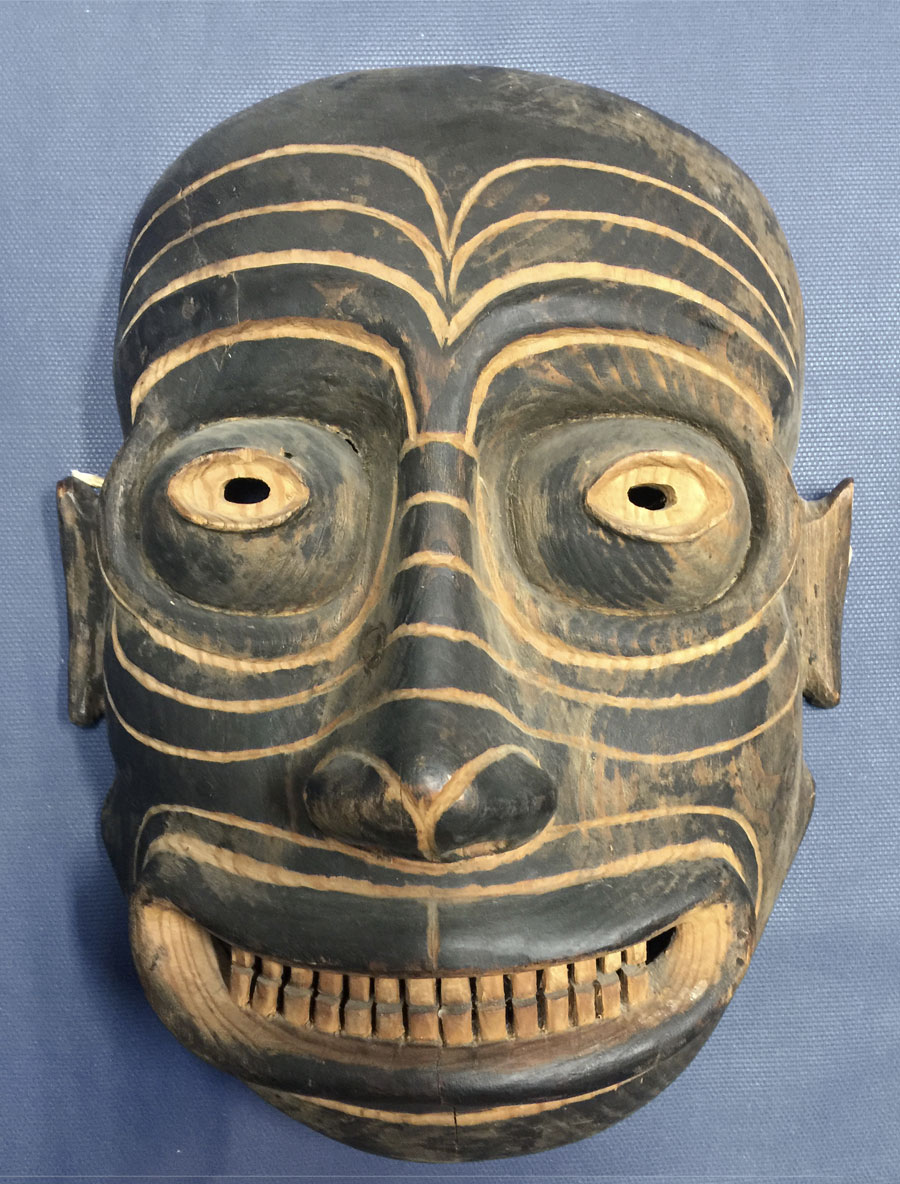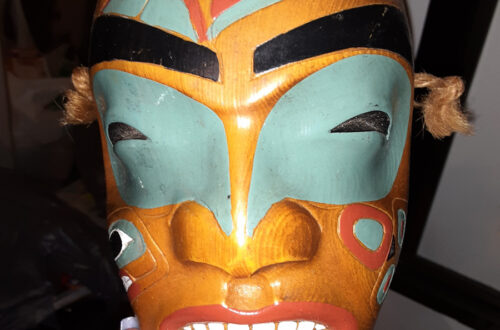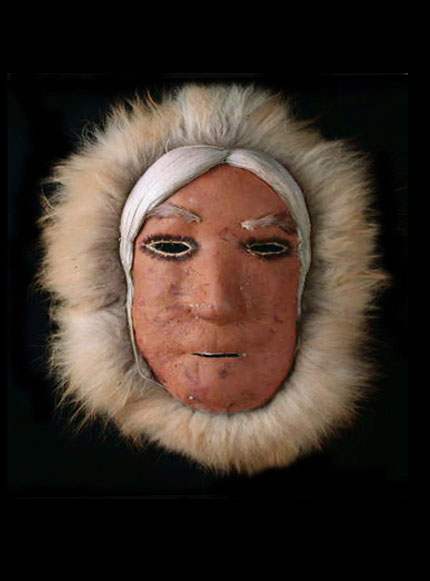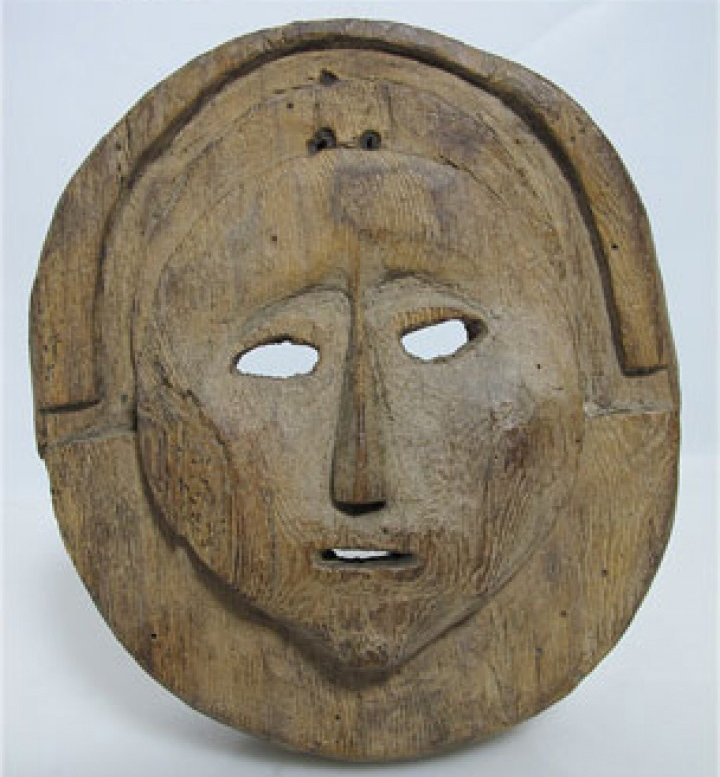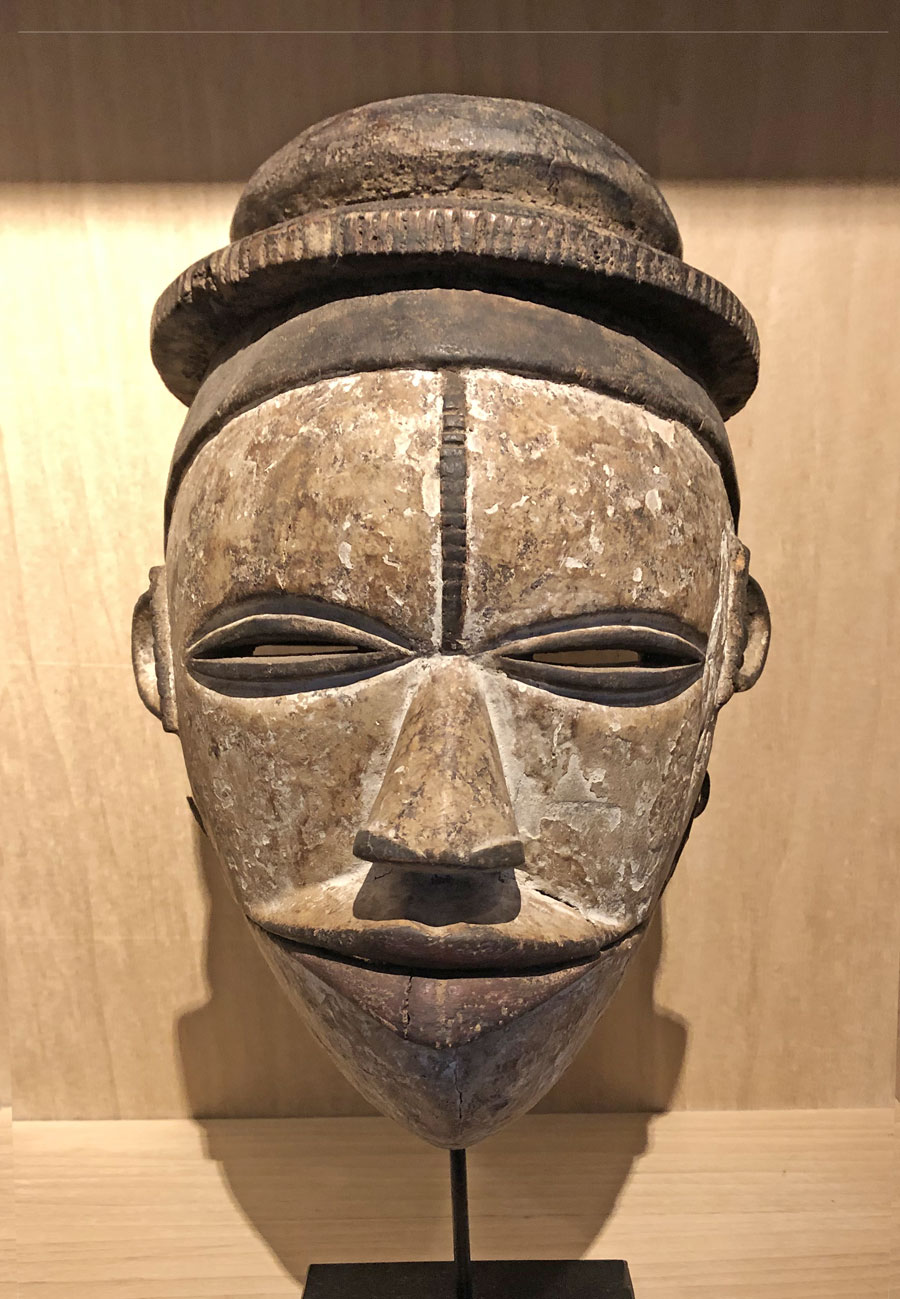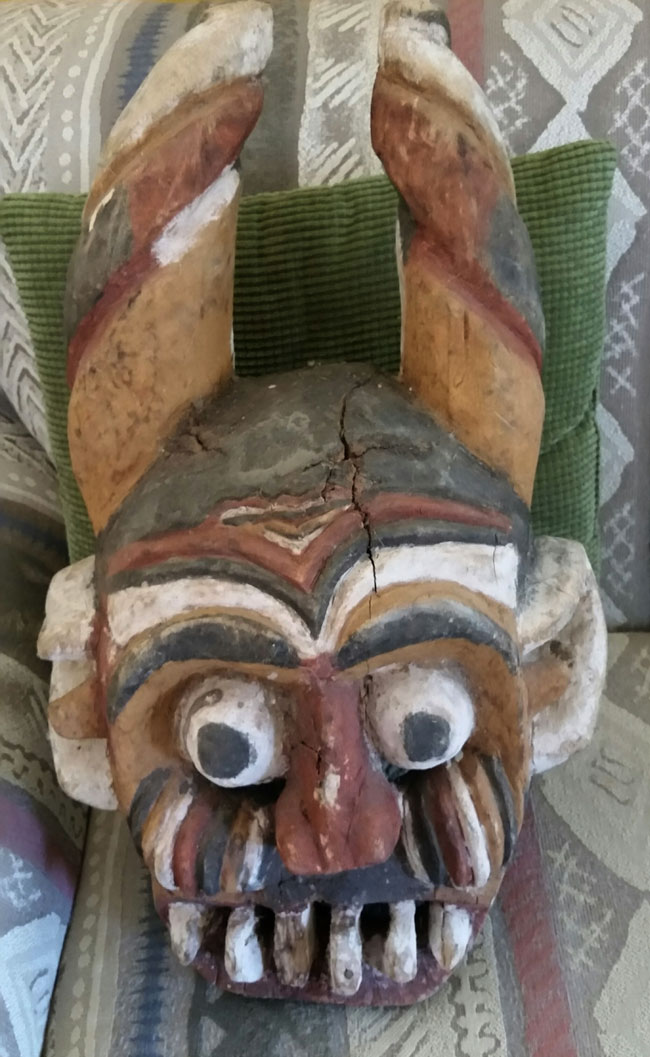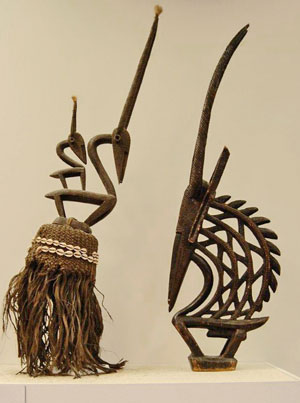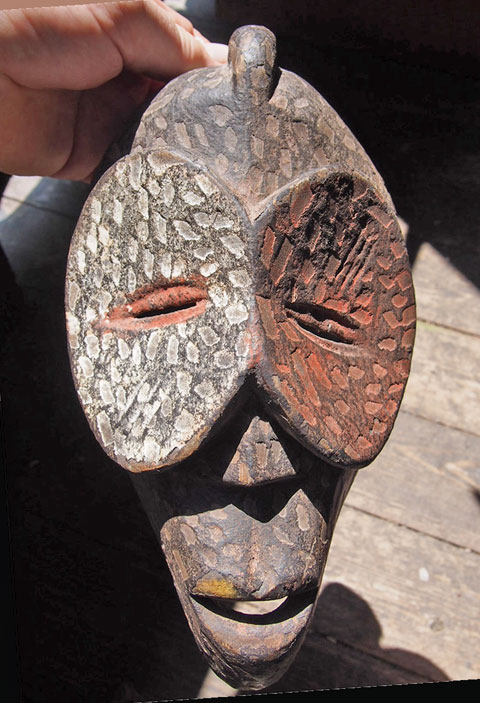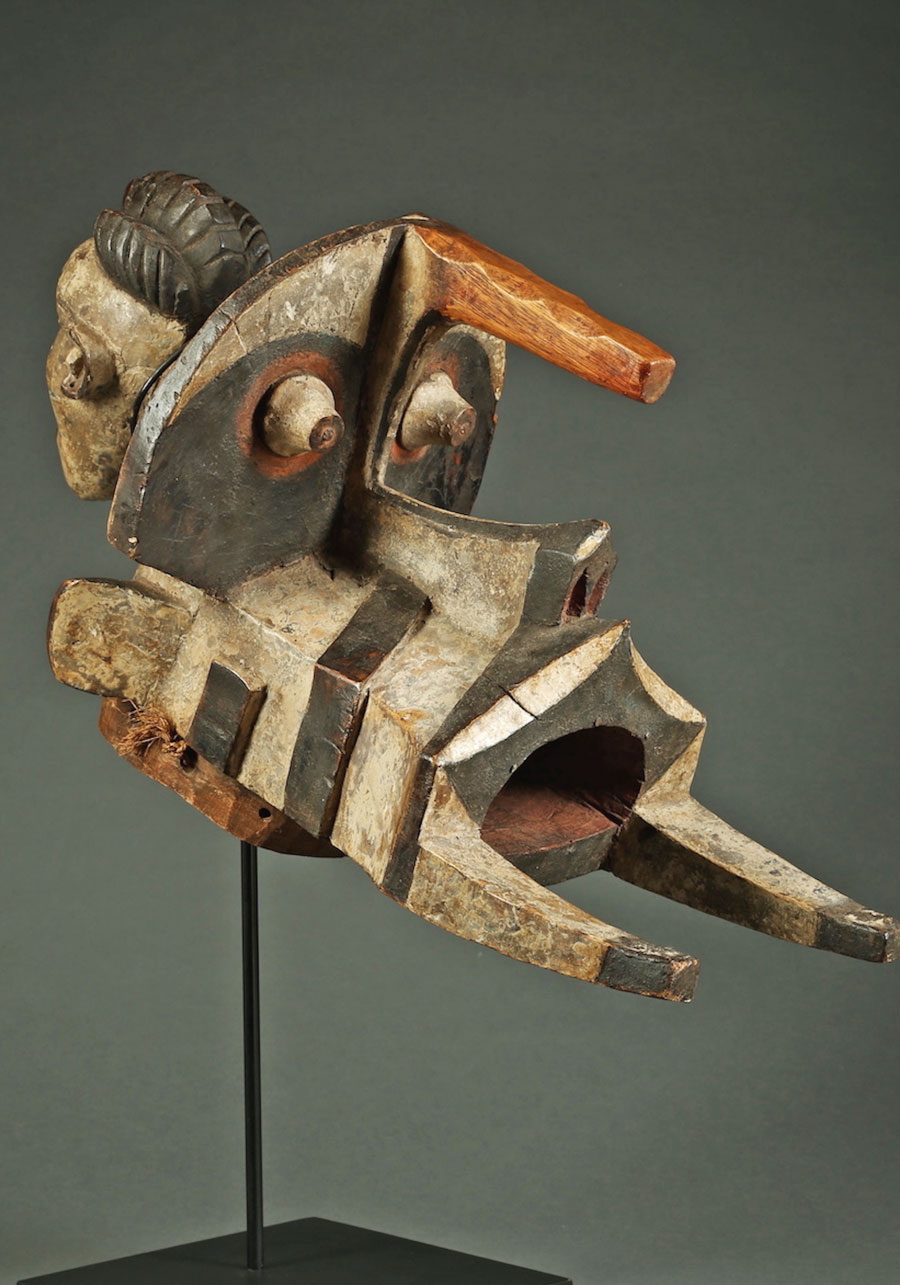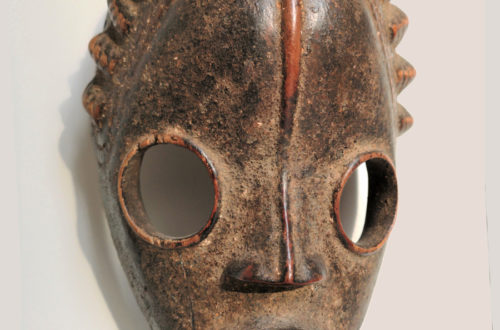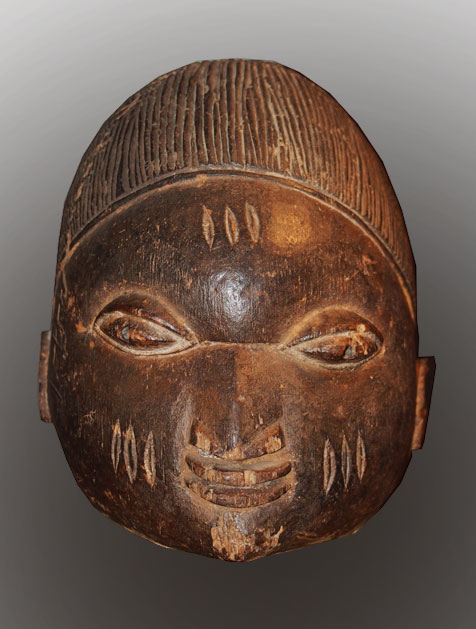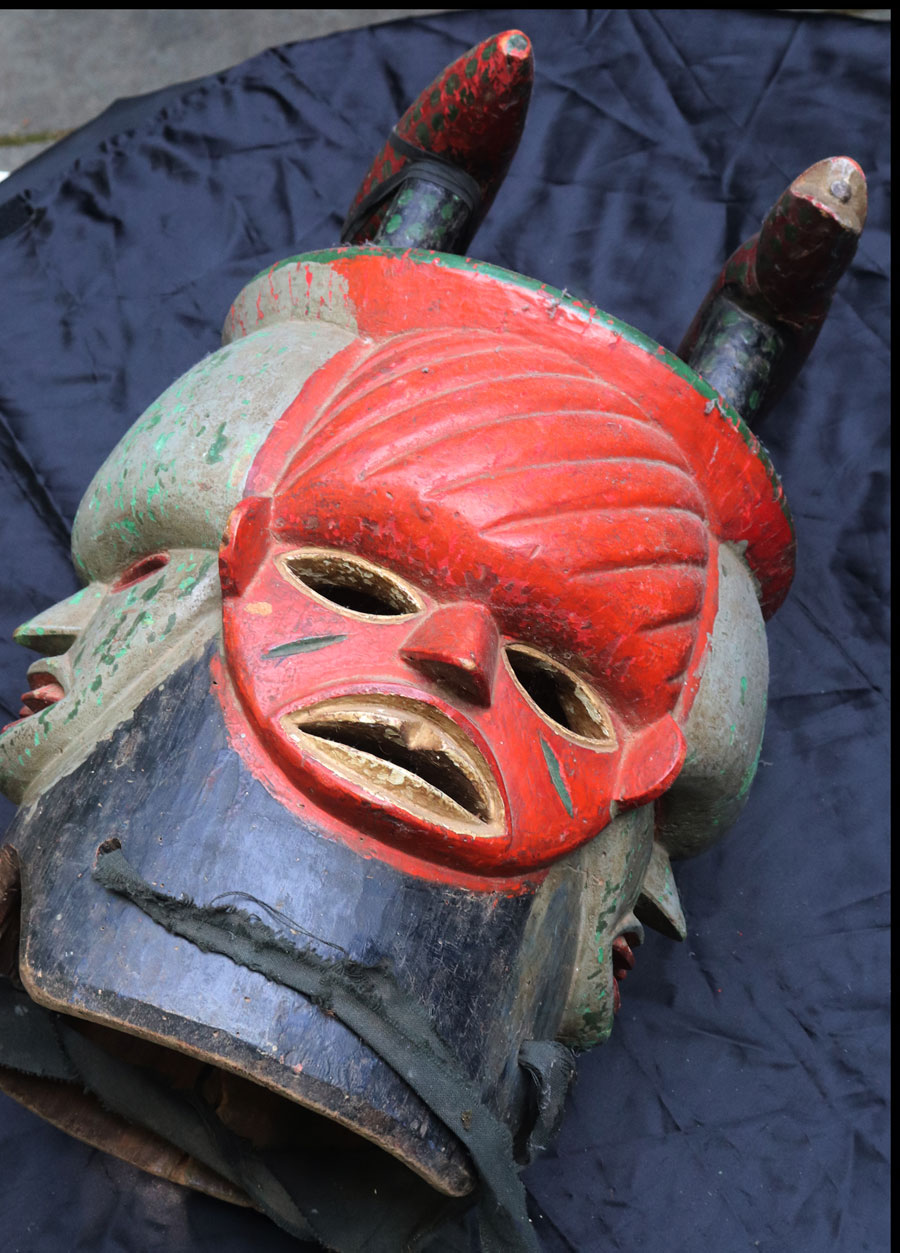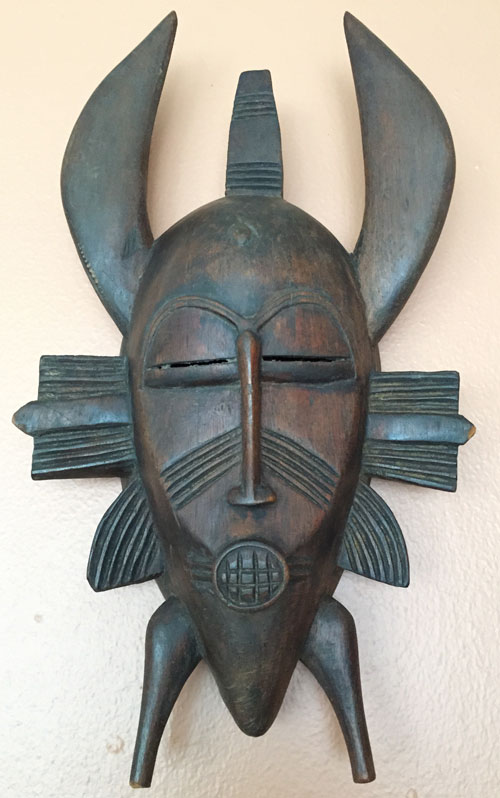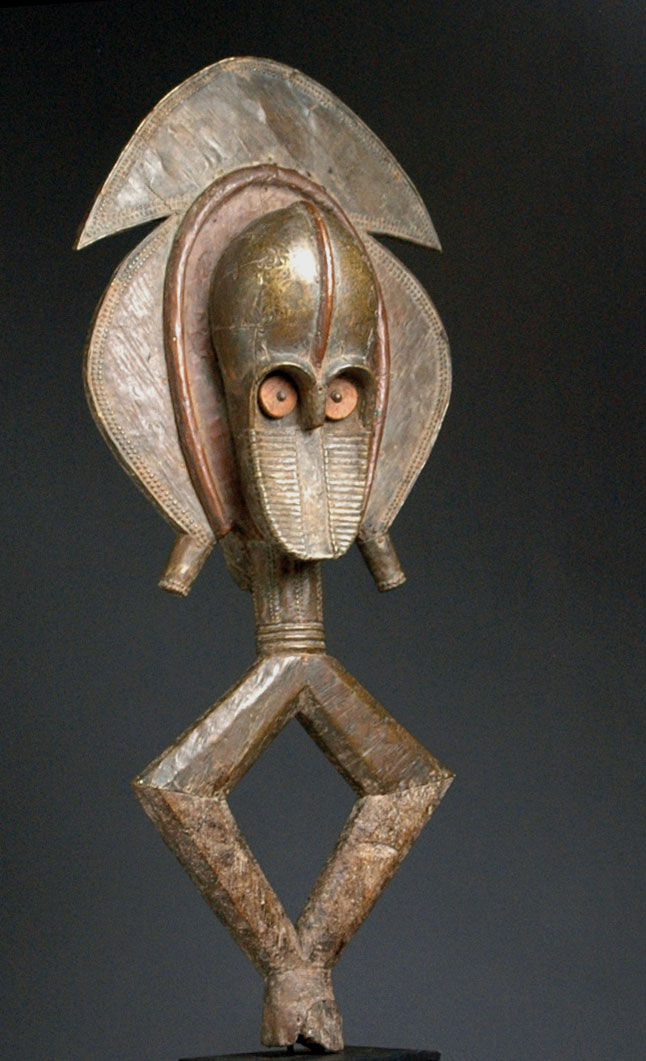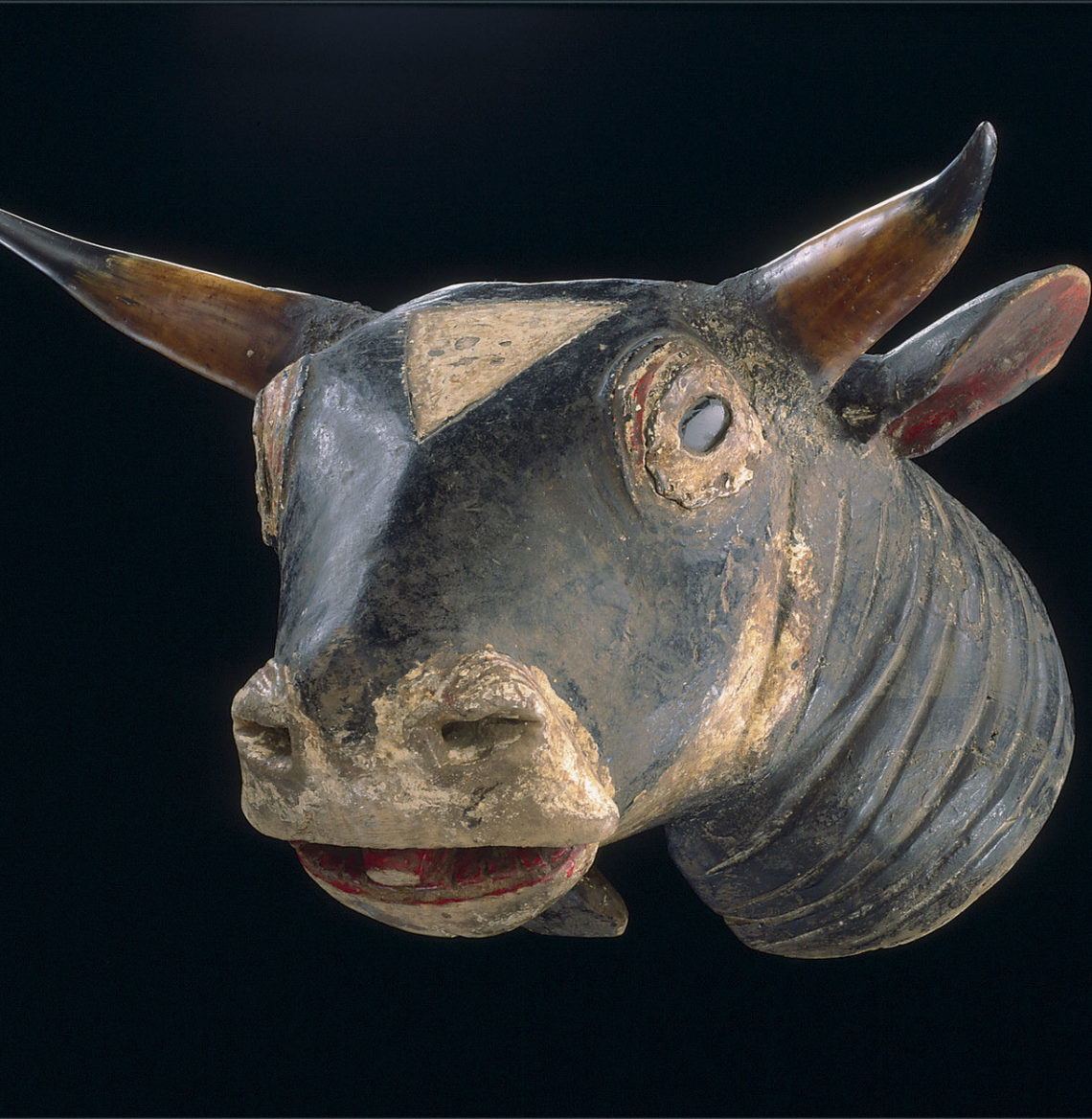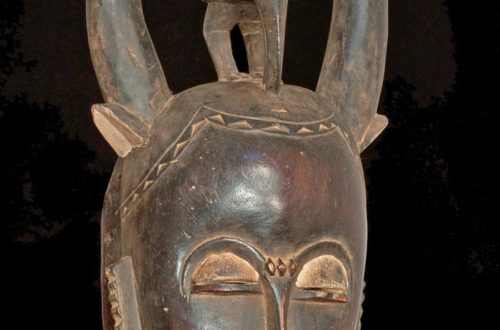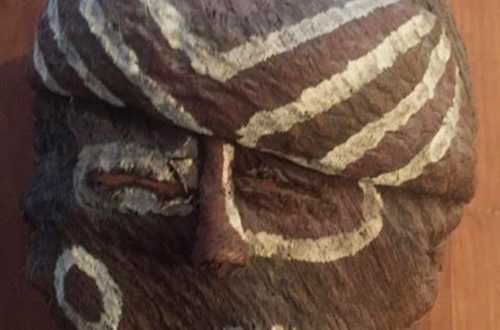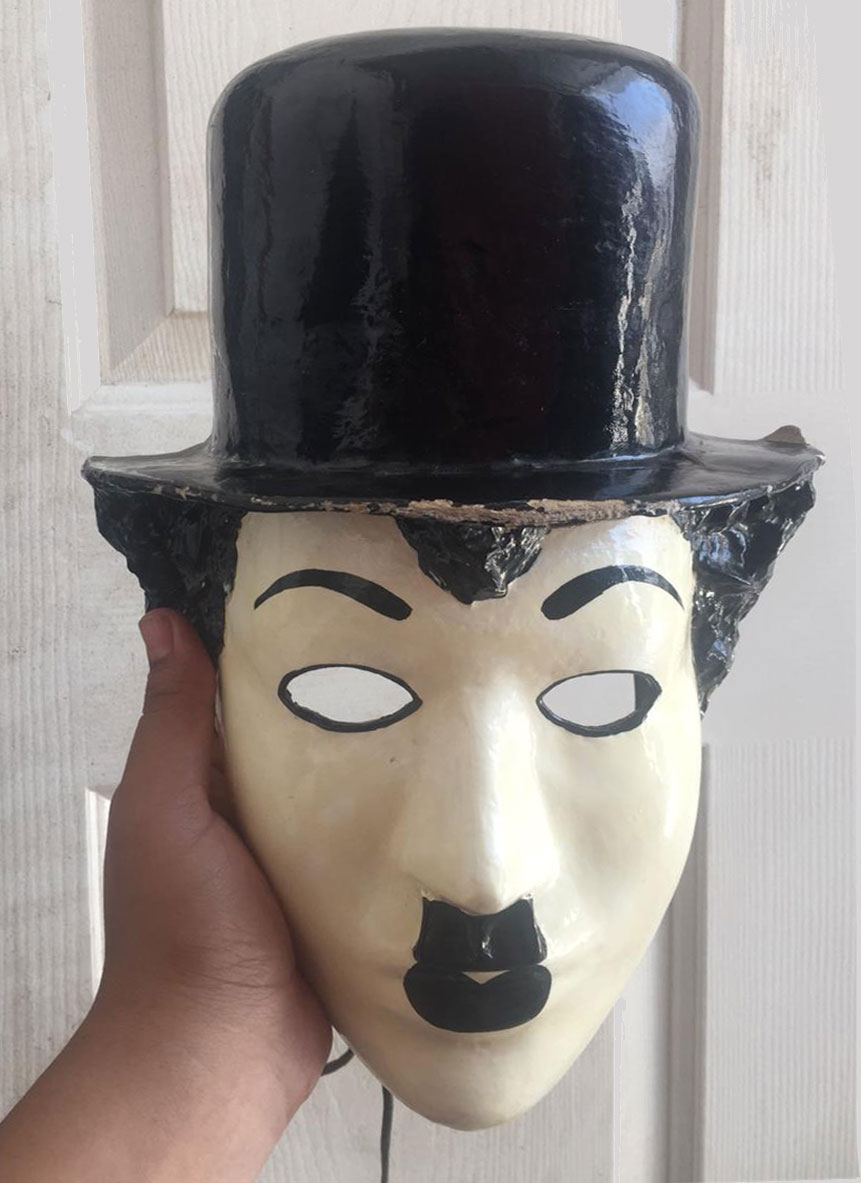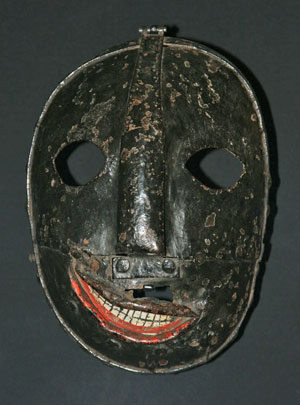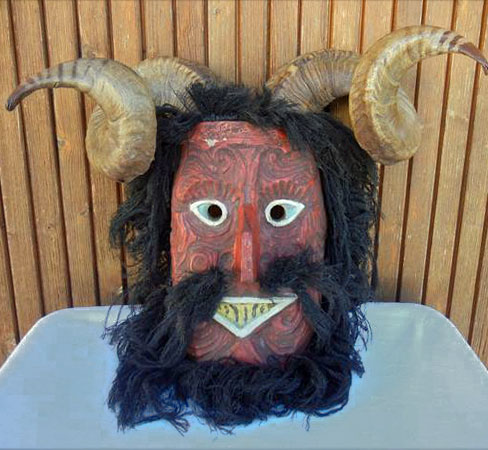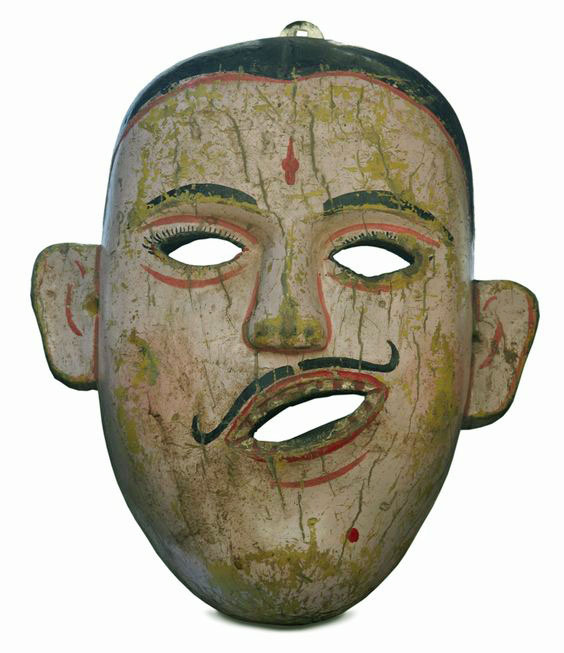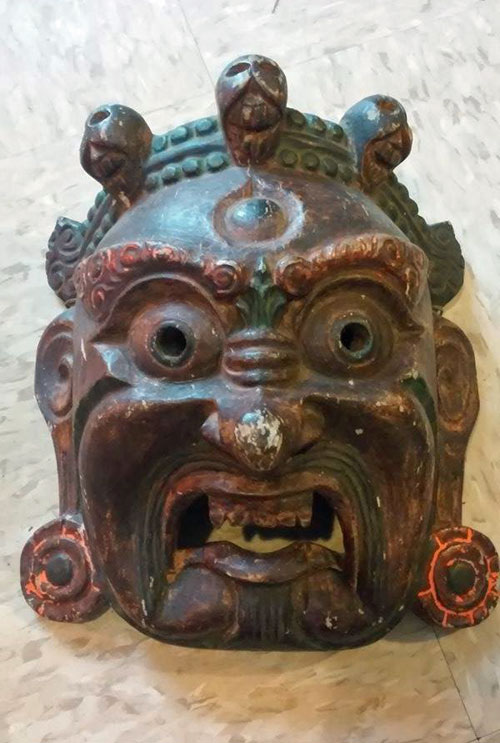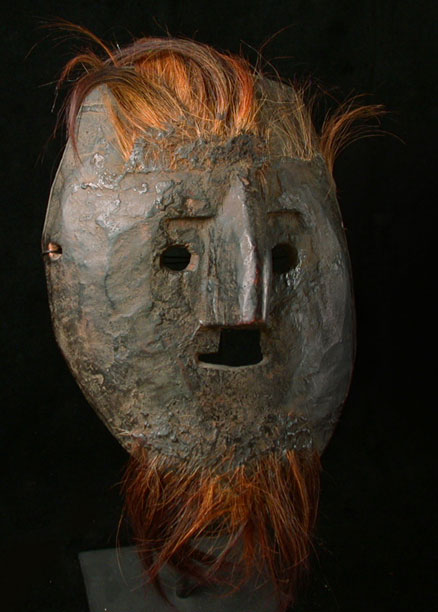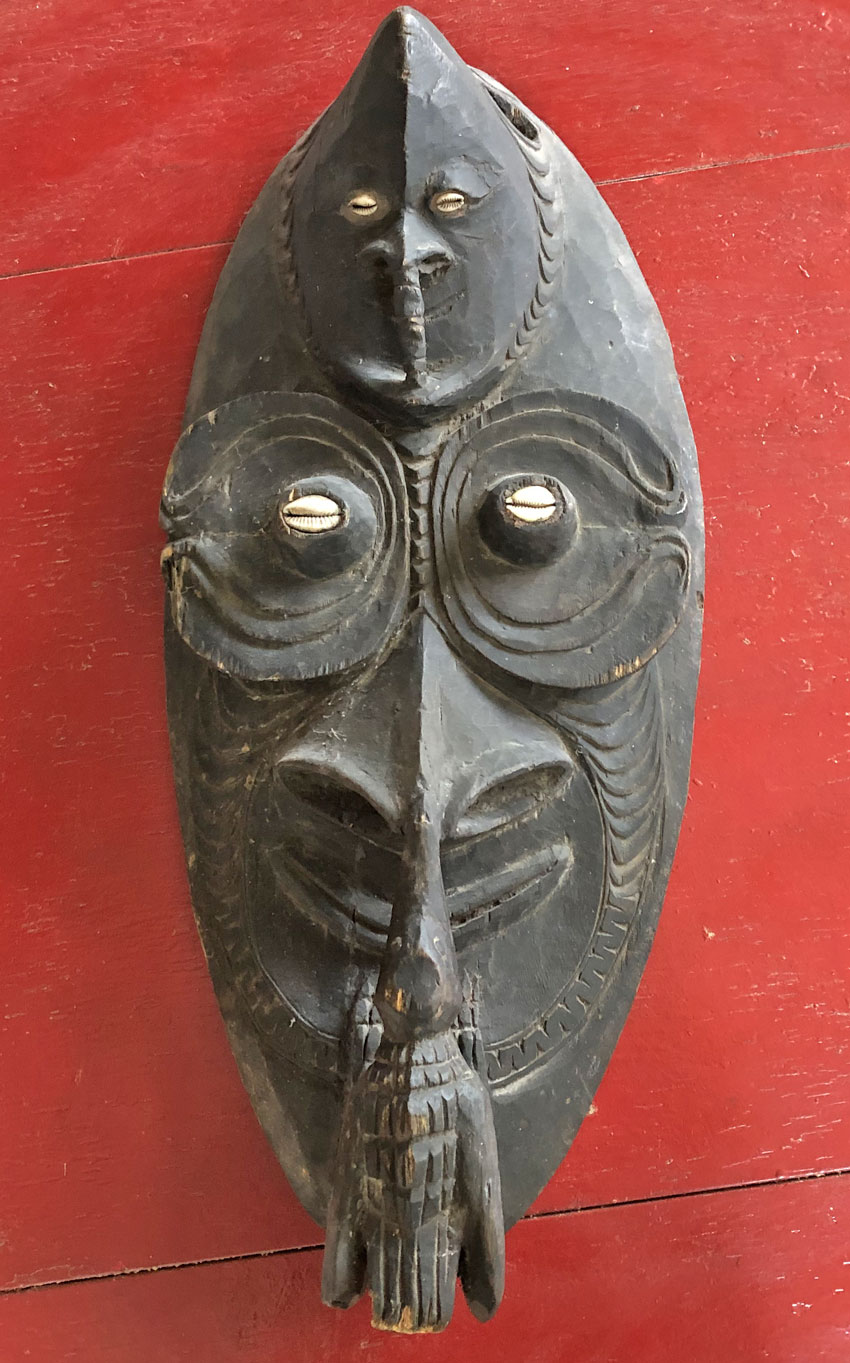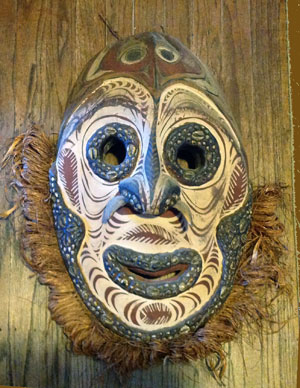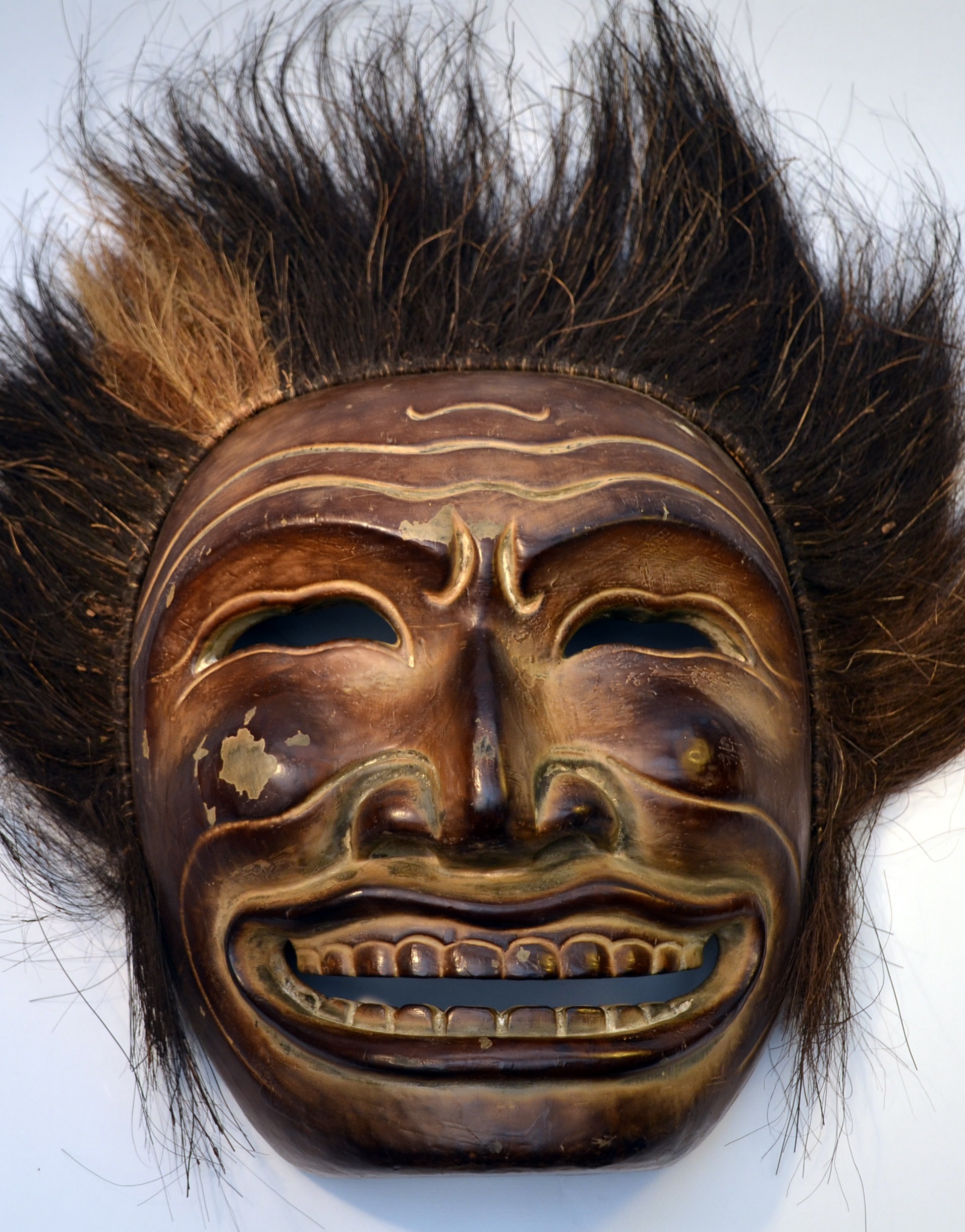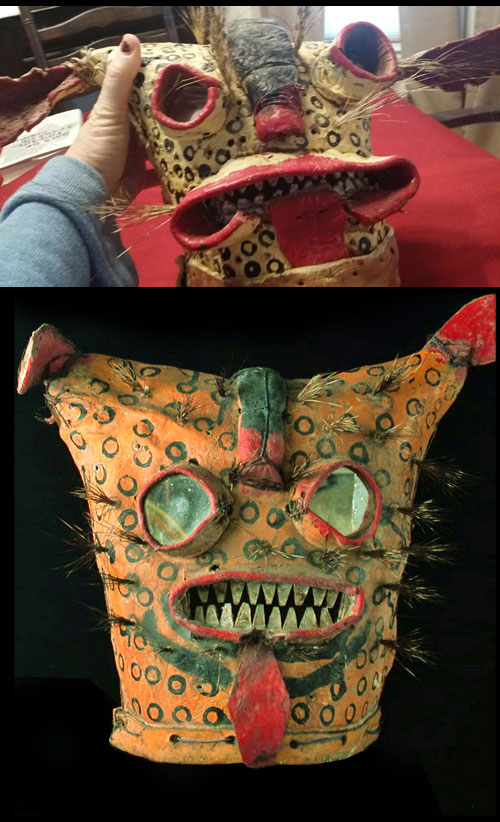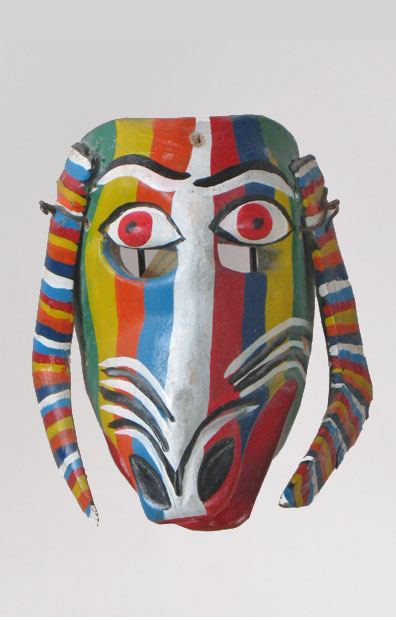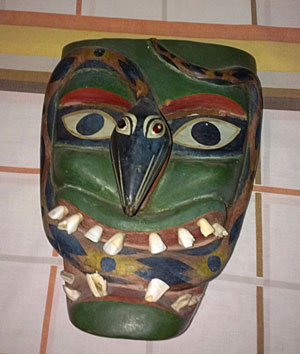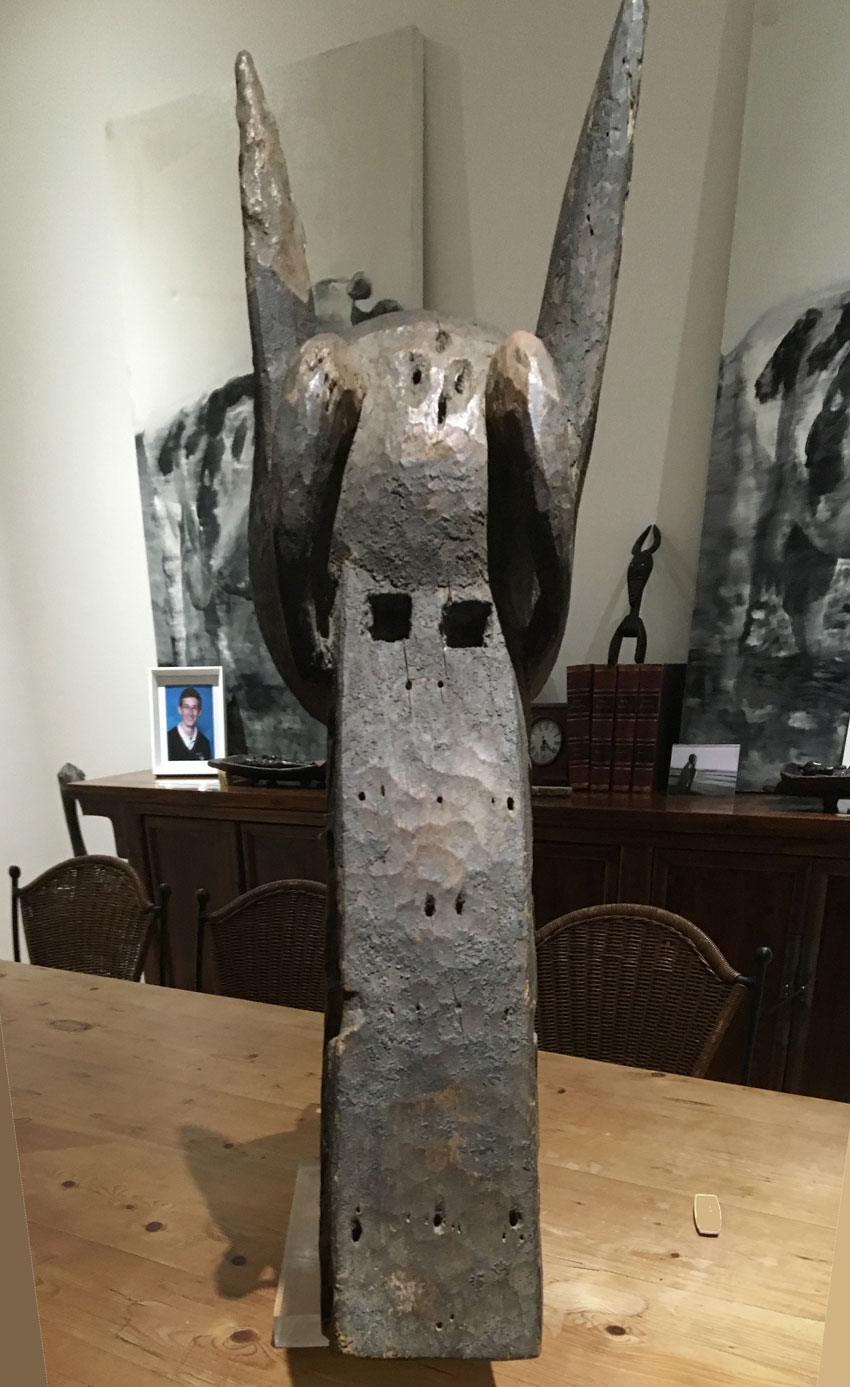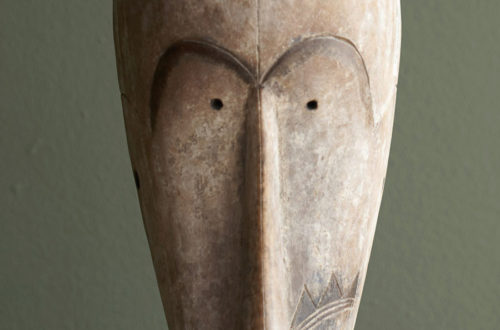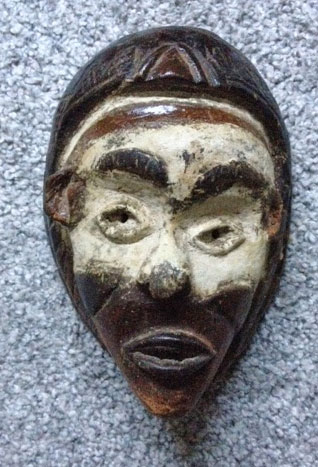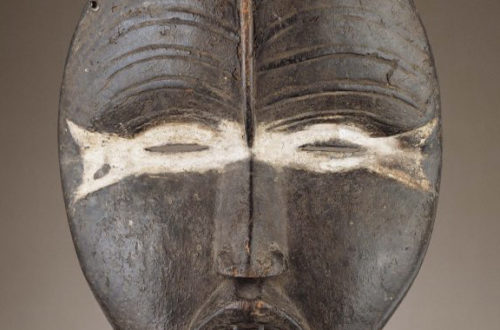Q: Hello, Here are photos of our friend’s Inuit family mask. It was created in the early 1900’s, we are not sure exactly when. Our friend was Eskimo from Greenland and she left us all her family artifacts when she past away 10 years ago. The mask is wood from the center of a tree, you can see the circles. Diane, 1582 A: This is a major find for any first-rate art or anthropological museum. And it comes with family provenance. But please be careful. There are plenty of collectors and dealers who will try to cheat you out of a fair price if you don’t have a good idea…
-
-
Ogoni mask with hinged jaw
Q: Hello, I bought this African mask at a thrift shop about 10 years ago. Paid around US$250.00 at the time. It has 12in x 7in x 6in (deep). Thanks! Alberto, 1581 A: The Ogoni are perhaps the oldest settlers of the Eastern Niger Delta, living south of the Igbo in heavily populated Nigeria. Because they encountered the British at a relatively late date and received comparatively less Westernized education than their neighbors, the Ogoni have maintained more of their precolonial culture than other tribes. Though masks vary regionally, they are of men or women with articulated jaws and narrow teeth usually made of cane. Historically, masks were worn in…
-
Ogbodo elephant mask from West Africa
Every week or so I like to pick an especially attractive mask to add to our Ask the Mask Man blogs. Often these are from West Africa, but they are always better in quality than those crude brown things you see on eBay and in thrift shops. This one is from the Igbo/Izzi people of Nigeria. Its human features, combined with the tusks and trunk of an elephant, were worn horizontally on the head. A grass fibre cuff at the lower rim concealed the head of the dancer, who was dressed in a fibre costume of knee-length. Every village has a whole hierarchy of these spirits, divided into age-grades, from…
-
West African 3-faced helmet mask
Q: Hi, I have a truly intriguing, very large wearable mask. Once again, I can not find anything like it. I would be most grateful for any insights or information. Thank You, Diane, 1579 A: I blew it the last time with your mystery mask on May 23. This one is even tougher for me. The design and colors are well done and very appealing. The patina is gorgeous. Is it old and used? I can’t tell, but if I were trying to earn a living making tourist masks I would not work this hard on a single item. Dear Viewers, please send us your comments on Diane’s intriguing mystery…
-
Bull mask from Guinea Bissau
The Bidjogo people make four versions of the bull mask which they still use today. Here is an excellent description of these realistic masks. Skip to paragraph 3 if you aren’t interested in their history. The historical significance of the ox for the Bidjogo peoples dates back to European encounters of the late fifteenth century, when Portuguese sailors introduced the animal to the Bissagos Islands in what is current day Guinea Bissau. Its prominent role gained momentum during the sixteenth and seventeenth centuries when warring villages stole stock from one another and foreign traders borrowed cattle on credit, all against the backdrop of a thriving slave trade that exacerbated existing…
-
Old-style Charlie Chaplin mask
Q: Hi, I got this mask on a yard sale, I’ve never seen something like it, and am asking for an opinion. Ericka, 1577 A: At the age of 82, I have seen images of Charlie Chaplin hundreds of times. But for millennials he could be ancient history. Several years ago I posted a very similar mask. The copy said… Halloween Charlie Chaplin Mask. Dresden, Germany. Painted papier mache. Hand-painted and constructed of heavy papier mache, this mask probably was made for Fasching. Germans call the pre-Lenten Carnival Fasching or Fastnacht, Americans call it Marti Gras. Here is what Wikipedia says today… Sir Charles Spencer Chaplin (16 April 1889 –…
-
More masks from India
A month ago I wrote how important Indian masks could be to collectors around the world. If there were some good books or websites we might begin to see them on the market. These masks can come from the traditional theater dances and parades of cities, or from the ceremonies of many different ethnic groups in villages around the country. Today there are over 1,349,000 people living in India. That is more than all of Africa– from Morocco to Madagascar. These four masks from different parts of India are new to me. I can’t tell you the names, purpose or origin of them. Wouldn’t be nice if a visitor would…
-
Ask the Mask Man or professional appraisal
Q: Got this from a dealer in Port Moresby. I would like to know its authenticity, value and where/tribe it came from. Old or new? After my answer, John wrote… I am interested in an appraisal, and information on where the mask is from (in Papua New Guinea) whether it is an authentic mask that was used in ceremonies, and whether it is particularly valuable. John, 1575 A: The answers that are posted on this site usually show 3 good photographs of the mystery mask, some interesting background info, and an A, B, C, D evaluation with can roughly suggest its value. An appraisal describes the mask, talks about marketing…
-
Tigre mask from Olinala, Guerrero
Q: Here I am again. The last time I had a mystery mask, you were stumped. I now have a more obvious one. It’s a Mexican tiger mask witch I paid 37.50 Euros for it. Is it made for the tourists? Height is 25cm. Thank you in advance. Roosje, 1574 A: In Mexico, Tigre means Jaguar. These large cats once occupied the entire country, but are now almost extinct. The Aztecs wore masks like this, and the masks are used in various places for dances and celebrations. In Olinala, Guerrero, they still wear the Tigre masks while dancing down the street carrying bundles of farm produce. This is part of…
-
Bamana helmet crest
Q: Good day Mr Ibold, it is me again and I appreciate your support. Please find attached a mask also collected in the Congo during the 50’s. 70 cm long and covered in (dried) mud. And most certainly weathered. Jan, 1573 A: The only problem with the description is that it implies made in the Congo area. Actually, it was made in Mali, far away in the northwest of Africa. This helmet crest is called a Komo by the Bamana people of Mali and is worn on the masquerader’s head. I think yours is authentic. The most important society for the Bamana was the Komo, whose members were grouped by…
